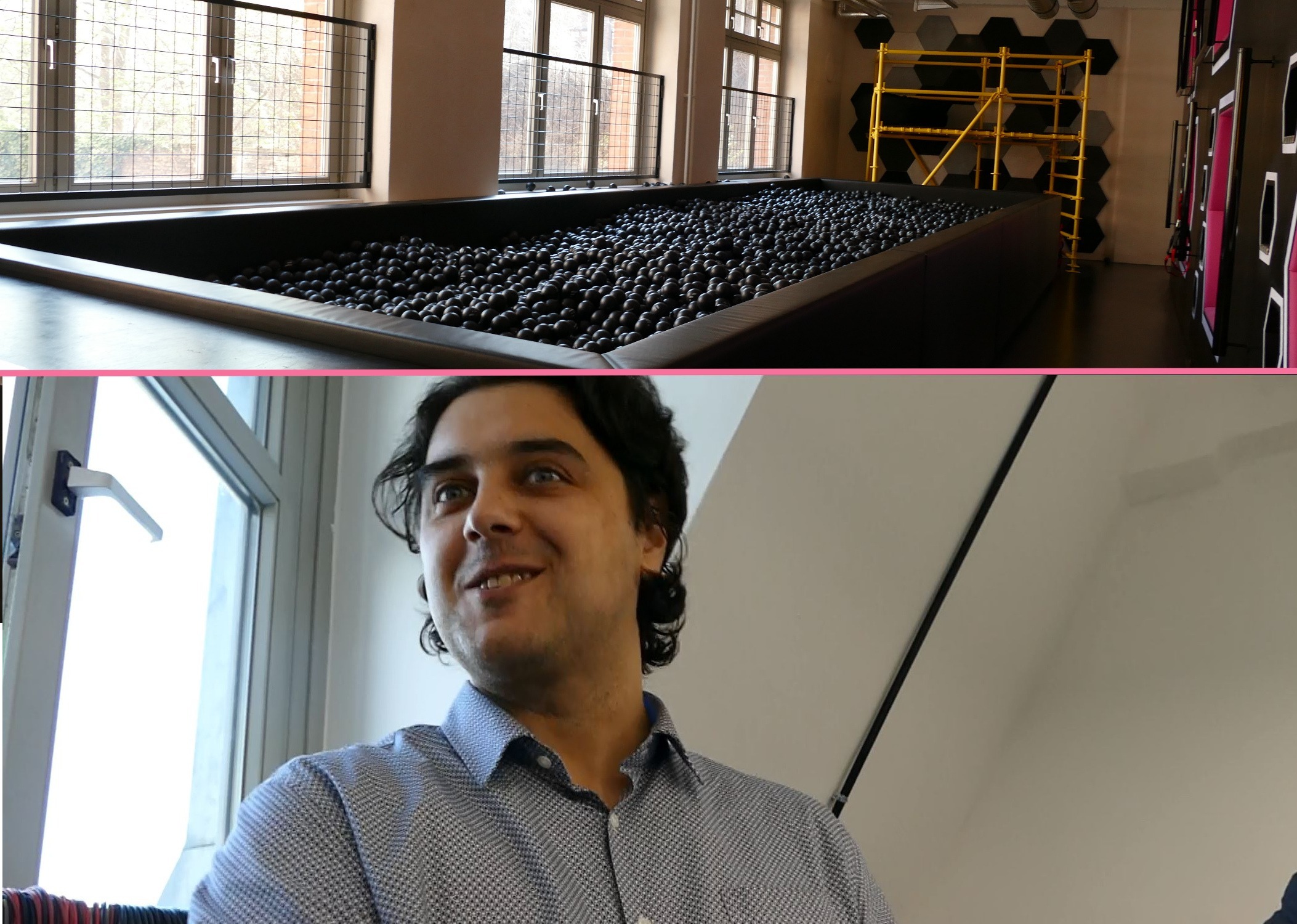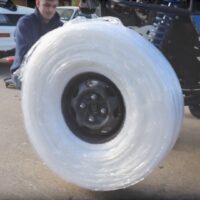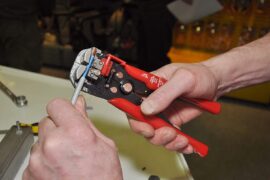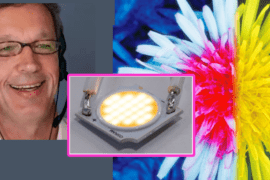We head to Berlin, Germany in the 2nd installment of my Euro tour learning about HW tech development across the pond. Here, I interview the CTO of Next Big Thing, Jasmin Skenderi. There’s also a video of their facilities at Factory Berlin, and an interview with a portfolio company, Sensry.
Some Thank-Yous
As with the contacts I made in Warsaw, Poland for the corresponding article, Hardware Massive is also to thank for introducing me to Next Big Thing, which is a part of their international network of chapters. So thank you again to CEO, Greg Fisher!
I also want to thank Pierre-Philippe Cordier, our cameraman for the interview with Skenderi. Thank you for agreeing to let me kidnap you 20 minutes after meeting you. You’re a champ.
The Tour
Watch the video below for an inside look at Next Big Thing and Factory Berlin. We also interview Jasmin Skenderi, CTO of Next Big Thing, and Mario Grafe, engineering manager of Sensry, shows off their sensor platform.
Next Big Thing: a “Company Builder”
There’s no concise way to label Next Big Thing (NBT). CTO Jasmin Skenderi described it as a “company builder”. However, that term isn’t a super well-known buzz word, so instead, I’ll offer, “VC/incubator/accelerator/coworking space/BFF”.
Also a “Co-Founder”
Skenderi told us NBT considers itself a co-founder to portfolio companies. They’re a co-founder that happens to have a lab, office space, an engineering team, access to legal, PR, and marketing help, and a bunch of money. That NBT guy is a great friend to have!
IoT, Blockchain, Machine Economy
Next Big Thing focuses on companies developing tech involving IoT, blockchain, and something I’d never heard of before called “machine economy” (read: Skynet). Skenderi tells me this term means when you allow machines to talk to each other and negotiate contracts. It’s also when you give a machine a bank account. Horror. I am horrified.
There was a vending machine project Skenderi showed us to demonstrate machine economy. Next to it, was an exercise machine which converted calories burned to a form of cryptocurrency.

The sweat-garnered e-cents could then be used in the old vending machine NBT hacked. The way it was stocked that day, you could buy chocolate to replace the energy you burned. I’m sure in practice, it would likely work a different way…

Is NBT the German Bolt.io?
The most similar American version of NBT I can think of which fuels companies pulling HW and SW tech together and which also brings a bunch of business-end support is Bolt.io. If Bolt and NBT ever have coffee and compare notes, please let us know! I’d be intrigued to learn more about commonalities and differences.
The CTO: Jasmin Skenderi, HW Nerd
Skenderi is a EE at his core. His academic background is in electrical engineering or “Elektrotechnik” which happens to be one of my favorite German words to say because it’s a wonderfully confusing mess of consonants.

After college, he got into a telecom project which pulled him into HW development. From there, he developed cool stuff which I won’t specifically mention for military, satellite, and other IoT applications. After a while, with all that experience, European companies assumed he could build their IoT or other embedded electronic devices and asked for his help. And what do ya know? He could.
It’s pretty rare to meet a German with so much varied experience. It’s more likely for a German to get hired and retire from the same company, or make some very limited hops. But Skenderi is not German; he’s from the Bosnia and Herzegovina area/country. (Or is it just Bosnia now? Or is it Bosnia-Herzegovina? You get where I mean.)
In any case, he lives in Germany now, and Next Big Thing is lucky to have him. Those portfolio companies entering into the fold are just as varied as Skenderi’s experience! I think it’s important for leadership to be able to quickly grasp their diverse technical and market challenges.
German Investors are Hardware Startup-Shy
Next Big Thing is unique in more than one way. Sure, they offer more than is typical to support startups. But just working with HW startups is itself odd for a VC-type company in Germany.
New hardware development is considered extremely risky for the typically risk-averse German business culture. And then put that in the hands of a startup instead of a century-old manufacturer? Yeah, no.
Hardware Is… Not Hard?
As a result, Skenderi tells me it’s more difficult to find backers for HW startups there. One of his goals at NBT is to change the perception among VC’s that hardware is hard. How? Well, simply by guiding several HW startups through to success.
Results of NBT’s Gamble
So how do Next Big Thing’s numbers look in terms of successful portfolio companies? Skenderi used a standard for comparison of about 95% of startups failing overall. In the US, I’ve heard a lot of different stats, most common being 90% failure rate. What is that 95% based on, though? Is that for Europe? Germany? Worldwide? Is it after 10 years or 1 year? Is it both HW and SW?
One point of agreement is: the chances simply aren’t good of your startup succeeding.

In comparison, when I pressed Skenderi for a rough ballpark of NBT’s numbers, he said there were around 80% succeeding under their wing so far, with around 5-7 startups taken on each year. That sounds pretty great! However, it’s worth noting that as of filming, NBT wasn’t quite 3 years old yet. If we want longer-term stats, we’ll have to wait.
Is It Too Much Assistance?
I found myself wondering whether all the support NBT provided could cause more harm than good. As a startup owner myself, I’m often thankful for the times I have to scrape by. It’s forced me to make hard decisions very quickly…decisions which may have been pushed off if I’d been financed or coddled in any way. Talking with many other American startups, I know I’m not alone. Many tell me their most desperate times were actually fuel to find the right pivot to success and mercilessly amputate what was not helpful. Bankruptcy and hunger is a very clarifying line to walk!
Yet, on the other hand, without the meccas of startup tech communities the United States provides, could Europe’s tendencies to throw extra support and money at HW startups be the best way to allow more success stories to emerge? I guess time will tell us.
Factory Berlin
Factory Berlin is a co-working space meant to encourage collaboration, and there seems to be a focus on tech development among its members. I was surprised to see offices for Audi and Siemens there. These are two large, old-school manufacturers headquartered in the south of Germany. What the what?
Jasmin Skenderi explained that these big, established companies know they need to innovate to survive. They also believe the grey cubicles in their corporate buildings may not be the best place for new ideas to emerge. They want some of their people in a different place, interacting with other brilliant people outside the silos. So, some space and workers in wild Berlin at Factory Berlin worked out nicely.

Plus, Factory Berlin has a ball crawl and honeycomb chill spaces, so obviously, this will encourage innovation. Just like all the offices in Silicon Valley! Or so I imagine they imagine.
Example of NBT Portfolio Company and a Collab
Partner with Code University
Next door to NBT is Code University, where students must complete practical projects. David Riding, engineering manager at Next Big Thing, told us the students have varying skill sets and varying needs for their projects. NBT helps fill in the gaps where they can. I was surprised that even though it’s a coding program, some of the students were building hardware projects and some also had prior experience with HW development.

At the time of the tour, a 3D printer was forming components for a Code University student project which would become a rig for indoor farming.
Sensry – Building Platforms for Sensors
Sensry makes platforms for sensors to connect to — they don’t make the sensors themselves. When I met Mario Grafe, engineering manager of Sensry, he told me they don’t really care what sensor their customers use. They offer the platform; it’s the development between sensor and user interface.

Grafe showed off his tech in the video when I met him at his booth at IDTechEx Berlin. To see his platform in action with sensors outputting real-time data to an app, watch the video starting at 13:28:
Drop Me a Line!
If you know of other great spaces or tech or HW startups or events or etc. you think we should cover, please send me a note at: erin@solidsmack.com
(And to all you things with optics: to the front of the line, you!)







